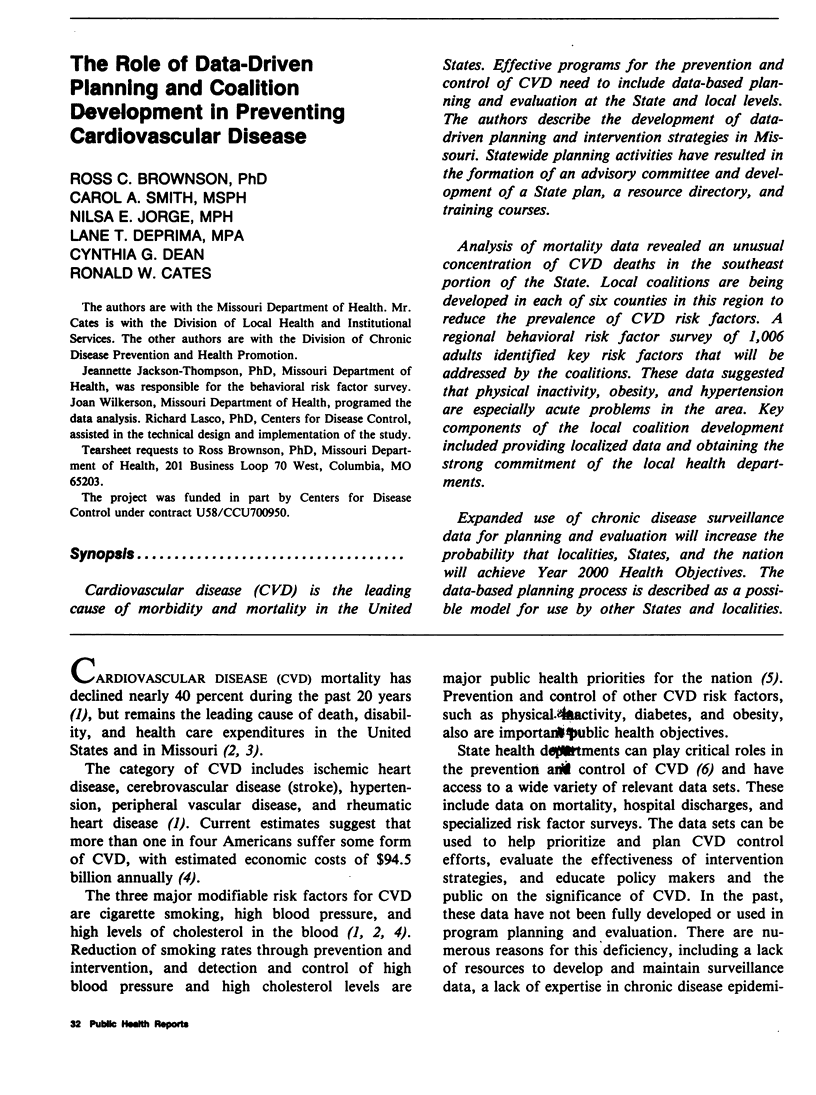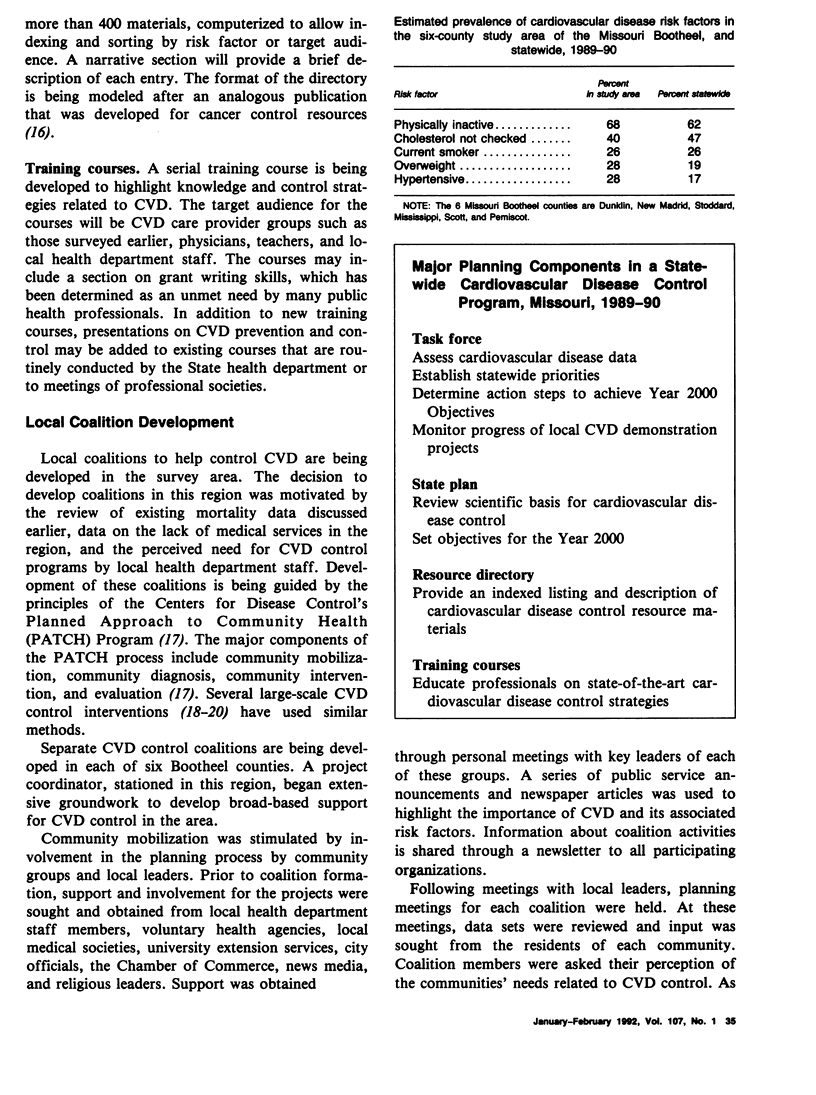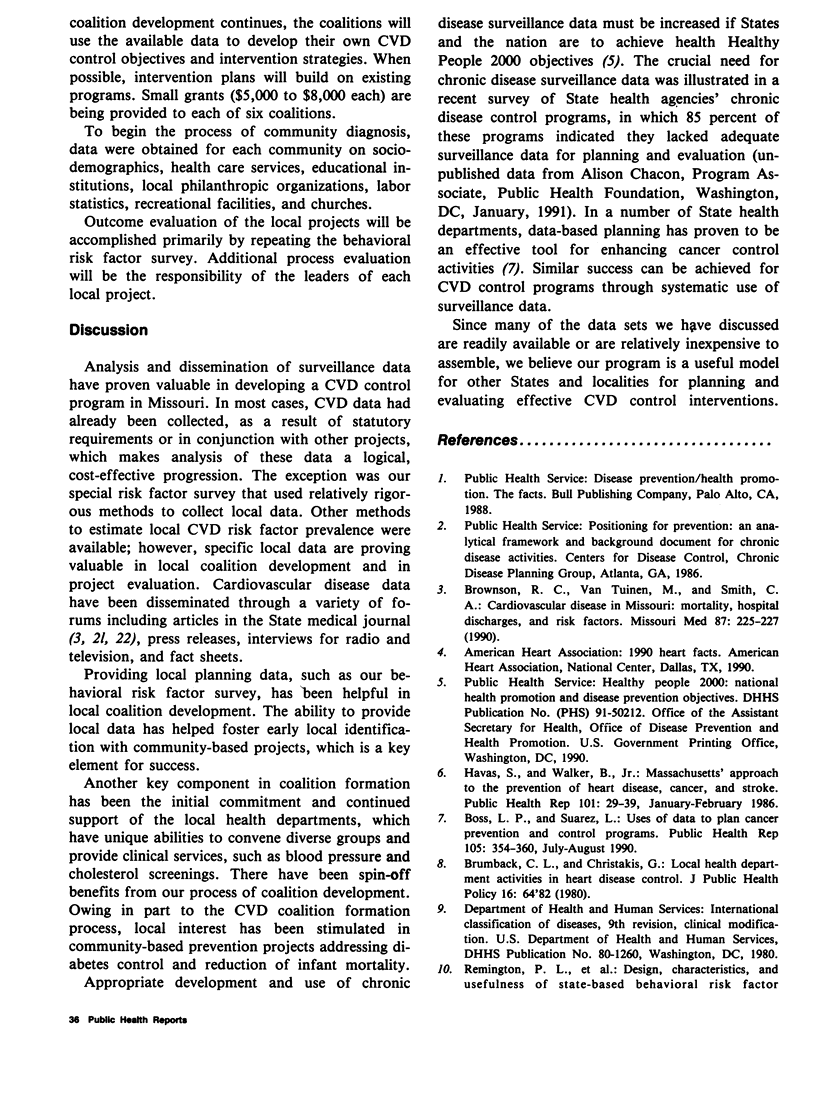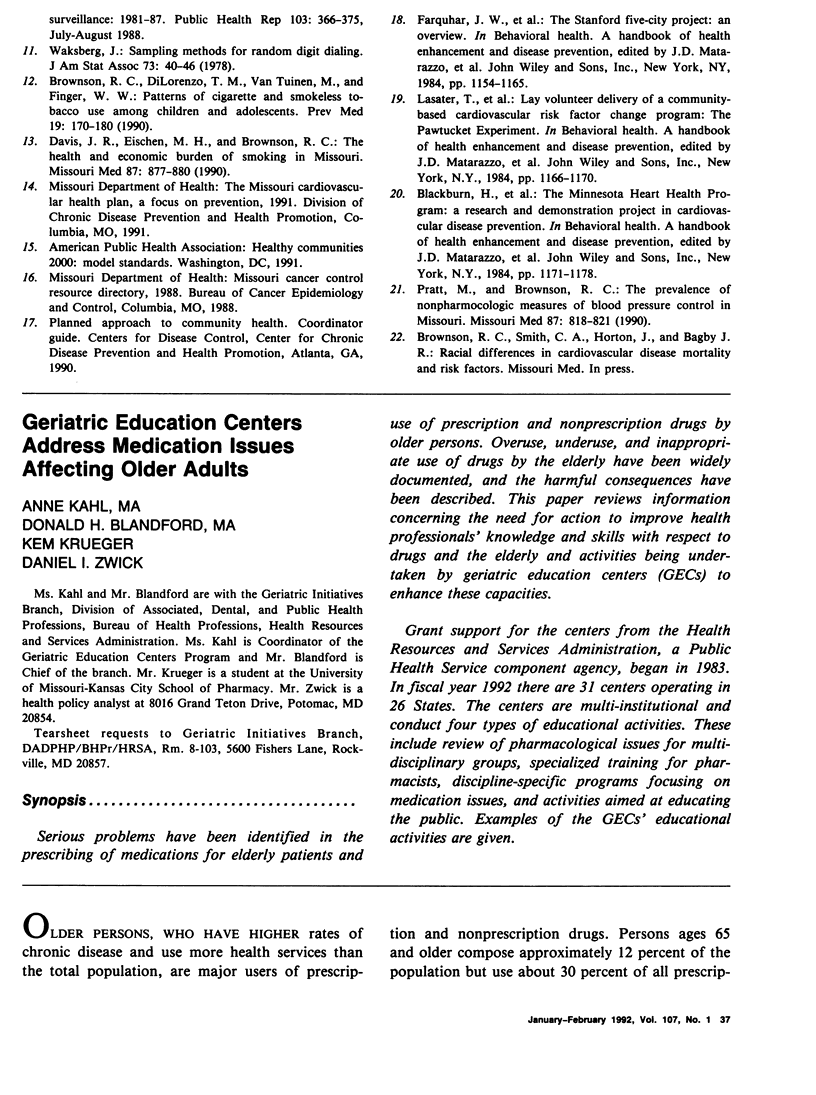Abstract
Cardiovascular disease (CVD) is the leading cause of morbidity and mortality in the United States. Effective programs for the prevention and control of CVD need to include data-based planning and evaluation at the State and local levels. The authors describe the development of data-driven planning and intervention strategies in Missouri. Statewide planning activities have resulted in the formation of an advisory committee and development of a State plan, a resource directory, and training courses. Analysis of mortality data revealed an unusual concentration of CVD deaths in the southeast portion of the State. Local coalitions are being developed in each of six counties in this region to reduce the prevalence of CVD risk factors. A regional behavioral risk factor survey of 1,006 adults identified key risk factors that will be addressed by the coalitions. These data suggested that physical inactivity, obesity, and hypertension are especially acute problems in the area. Key components of the local coalition development included providing localized data and obtaining the strong commitment of the local health departments. Expanded use of chronic disease surveillance data for planning and evaluation will increase the probability that localities, States, and the nation will achieve Year 2000 Health Objectives. The data-based planning process is described as a possible model for use by other States and localities.
Full text
PDF





Selected References
These references are in PubMed. This may not be the complete list of references from this article.
- Boss L. P., Suarez L. Uses of data to plan cancer prevention and control programs. Public Health Rep. 1990 Jul-Aug;105(4):354–360. [PMC free article] [PubMed] [Google Scholar]
- Brownson R. C., DiLorenzo T. M., Van Tuinen M., Finger W. W. Patterns of cigarette and smokeless tobacco use among children and adolescents. Prev Med. 1990 Mar;19(2):170–180. doi: 10.1016/0091-7435(90)90018-f. [DOI] [PubMed] [Google Scholar]
- Brownson R. C., Van Tuinen M., Smith C. A. Cardiovascular disease in Missouri: mortality, hospital discharges and risk factors. Mo Med. 1990 Apr;87(4):225–227. [PubMed] [Google Scholar]
- Davis J. R., Eischen M., Brownson R. C. The health and economic costs of smoking in Missouri. Mo Med. 1990 Dec;87(12):877–880. [PubMed] [Google Scholar]
- Havas S., Walker B., Jr Massachusetts' approach to the prevention of heart disease, cancer, and stroke. Public Health Rep. 1986 Jan-Feb;101(1):29–39. [PMC free article] [PubMed] [Google Scholar]
- Pratt M., Brownson R. C. The prevalence of nonpharmacologic measures of blood pressure control in Missouri. Mo Med. 1990 Nov;87(11):818–821. [PubMed] [Google Scholar]
- Remington P. L., Smith M. Y., Williamson D. F., Anda R. F., Gentry E. M., Hogelin G. C. Design, characteristics, and usefulness of state-based behavioral risk factor surveillance: 1981-87. Public Health Rep. 1988 Jul-Aug;103(4):366–375. [PMC free article] [PubMed] [Google Scholar]


